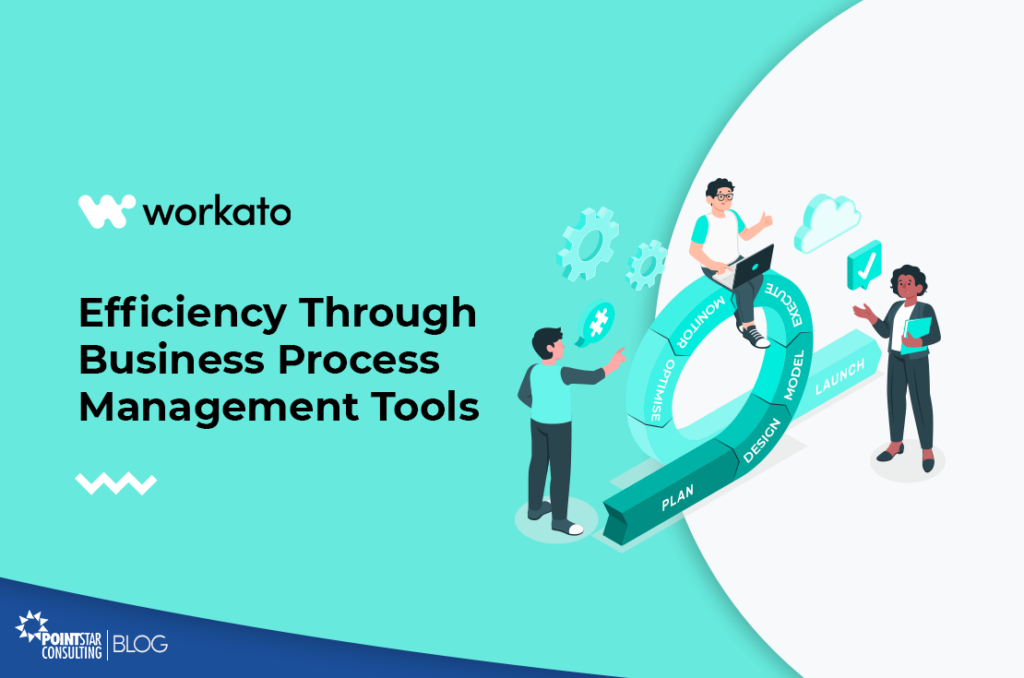In the intricate dance of business operations, you might need help with manual tasks, clearing bottlenecks in employee workflows, or managing pitfalls due to the lack of error handling. The key lies in embracing a powerful solution: the Business Process Management (BPM) tool to navigate these challenges effectively.
BPM is a discipline that guides organisations through a systematic approach to building and enhancing their business processes. At its core, BPM involves a series of stages—design, model, execute, monitor, and optimise—to ensure the seamless flow and constant improvement of processes. Using BPM tools, teams can identify and address inefficiencies and automate and optimise workflows, leading to increased efficiency, reduced errors, and improved overall performance.
In this article, we will delve deeper into the intricacies of BPM, exploring its functionalities, impactful use cases, benefits, and potential drawbacks. Join us on this journey as we unravel the transformative potential of BPM.
Understanding Business Process Management
At its core, BPM is a discipline guiding you through a series of steps to either build or enhance a business process. As organisations embrace BPM frameworks, there is a need for a tool to address common issues.
The BPM Lifecycle
Embarking on the BPM journey involves five sequential stages: design, model, execute, monitor, and optimise. Effectively navigating through these stages promises a finely tuned and efficient business process.
- Design: Understand the business process by engaging with stakeholders, speaking with the operations team, reviewing documentation, and observing the process.
- Model: Visualise the current state of the business process and articulate the desired state.
- Execute: Implement the new business process.
- Monitor: Track performance, identify improvements and address any emerging issues.
- Optimise: Incorporate improvements and resolve issues identified during the monitoring stage.
Demystifying Business Process Management Tools
A BPM tool enables you to map and automate workflows requiring human intervention. Beyond automation, these tools empower you to create custom applications, simplifying end-user interactions with workflows.
Business Process Management Examples
The versatility of BPM tools shines through in various scenarios:
Paid Time Off (PTO) Approvals
Streamline leave requests by creating a seamless approval process, ensuring managers can review and approve requests effortlessly within a customised BPM application.
Incident Management
Expedite issue resolution using a BPM tool to automate incident management processes, from ticket submission to assignment and resolution.
Employee Onboarding
Enhance the onboarding experience by automating critical tasks, such as equipment provisioning and application access, triggered by the execution of a candidate’s offer letter.
The Significance of BPM
BPM brings a plethora of benefits:
Time Savings
A single-user interface for multiple tasks reduces the time spent navigating different systems.
Error Prevention
Automation minimises the risk of human errors, safeguarding against issues like unauthorised data access or routing errors.
Enhanced Employee Experience
By eliminating mundane tasks, BPM allows employees to focus on strategic activities, boosting overall job satisfaction.
Increased Customer Satisfaction
BPM facilitates automation geared towards swiftly resolving customer issues, increasing customer satisfaction.
The Challenges of BPM
However, BPM tools come with their own set of challenges:
Technical Expertise Required
Utilising BPM tools often demands technical expertise, limiting access to a select group of developers.
Human Interaction Focus
BPM tools are tailored for approval-based workflows, potentially excluding scenarios that can be fully automated without human intervention.
Reducing Human Intervention
As AI evolves, processes are beginning to require less human interaction, potentially diminishing the relevance of BPM solutions.
Elevating BPM Capabilities with Workato
Workato, a leader in enterprise automation, offers a low-code / no-code (LCNC) model for designing business process automation. With features like pre-built connectors, role-based access control, and an API platform, Workato empowers organisations to leverage a BPM solution’s automation capabilities efficiently.
BPM emerges as a guiding force in the dynamic business landscape, offering a blend of efficiency, adaptability, and automation. Embrace it and watch your business processes transform into seamless, well-oiled engines driving success.



